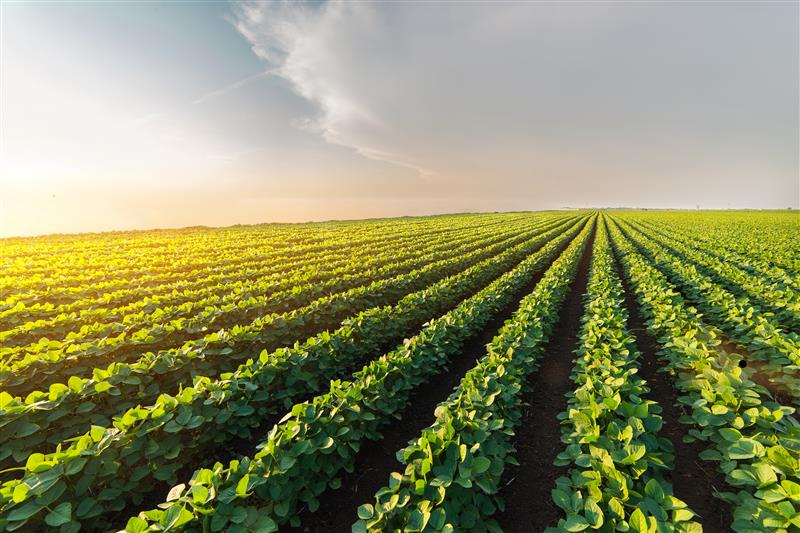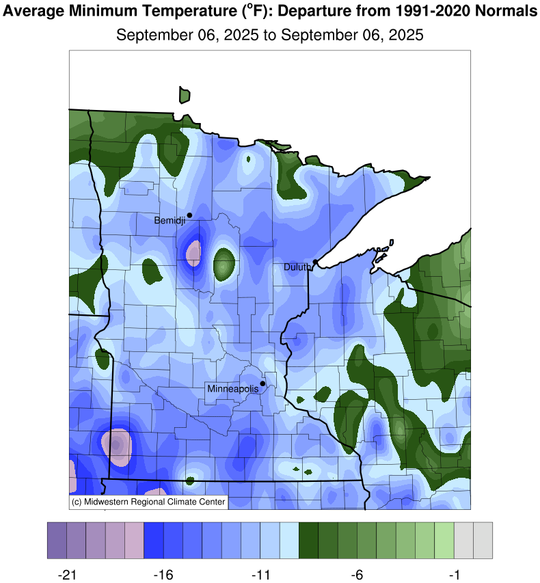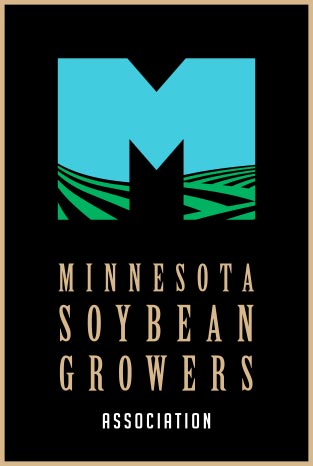Soybean frost risk in Minnesota: Know your crop stage
Soybean frost risk in Minnesota: Know your crop stage

Cool nights in early September dropped temperatures well below average across parts of Minnesota. On Sept. 6, some areas dipped to 30–32°F for a few hours overnight. While brief, this type of cold snap reminds us that frost can still pose a threat to soybean yields as we move into fall. In Figure 1, we can see the distribution of minimum temperatures on Sept. 6.
When does frost matter for soybeans?
The effect of frost depends on crop stage:
- Soybean R6 (full seed): At this stage, the pod contains a green seed that completely fills the pod cavity at one of the four uppermost nodes on the main stem with a fully developed leaf. Soybeans are still transferring nutrients to the seed, so frost damage at this stage can result in significant yield and quality losses.
- Soybean R6.5: This occurs about 7–10 days after full seed (R6). At this stage, the seed within the pod can be easily separated from its protective membrane. Research conducted by Dr. Seth Naeve at the University of Minnesota has shown that plant death at R6.5 can decrease yield by 5–10%. This is a critical window; plants are close to maturity but not entirely safe from frost damage.
- Soybean R7 (beginning maturity): One pod anywhere on the main stem has reached its mature color. Once soybeans hit R7, frost will not reduce yield, even after extended exposure.
Bottom line: If your soybeans are at R6.5 or earlier, frost damage could reduce yield and seed quality (protein and oil). If they’re at R7, the risk is essentially gone.
What can you do?
There’s no spray or rescue option for frost but scouting makes a significant difference in assessing the risk of crop damage. Walk your fields, check growth stages and identify where risk is highest. Watch for:
- Low-lying areas, which frost first.
- Soils with sufficient moisture, high organic matter or crop residue can help reduce light frost damage. Additionally, higher plant populations and closer row spacing tend to slightly lessen frost damage, although they are not the ultimate solutions.

Takeaway
Scouting now helps you understand your frost risk. Soybeans at R6.5 are especially vulnerable; frost damage at this stage could cost you 5–10% of your yield. Once fields reach R7, the risk drops to near zero.
If you have questions about staging or frost impact, contact your ag representative, county agent, Extension specialist or the Minnesota Soybean Research & Promotion Council.



